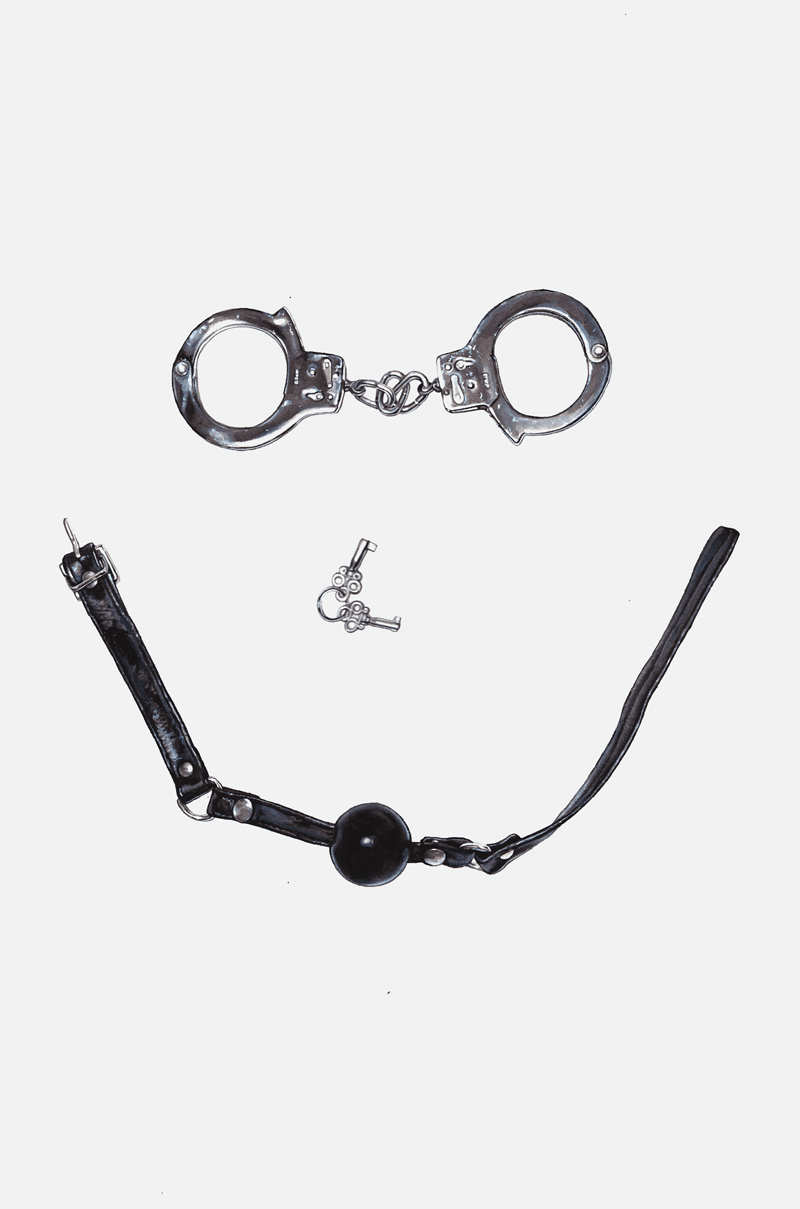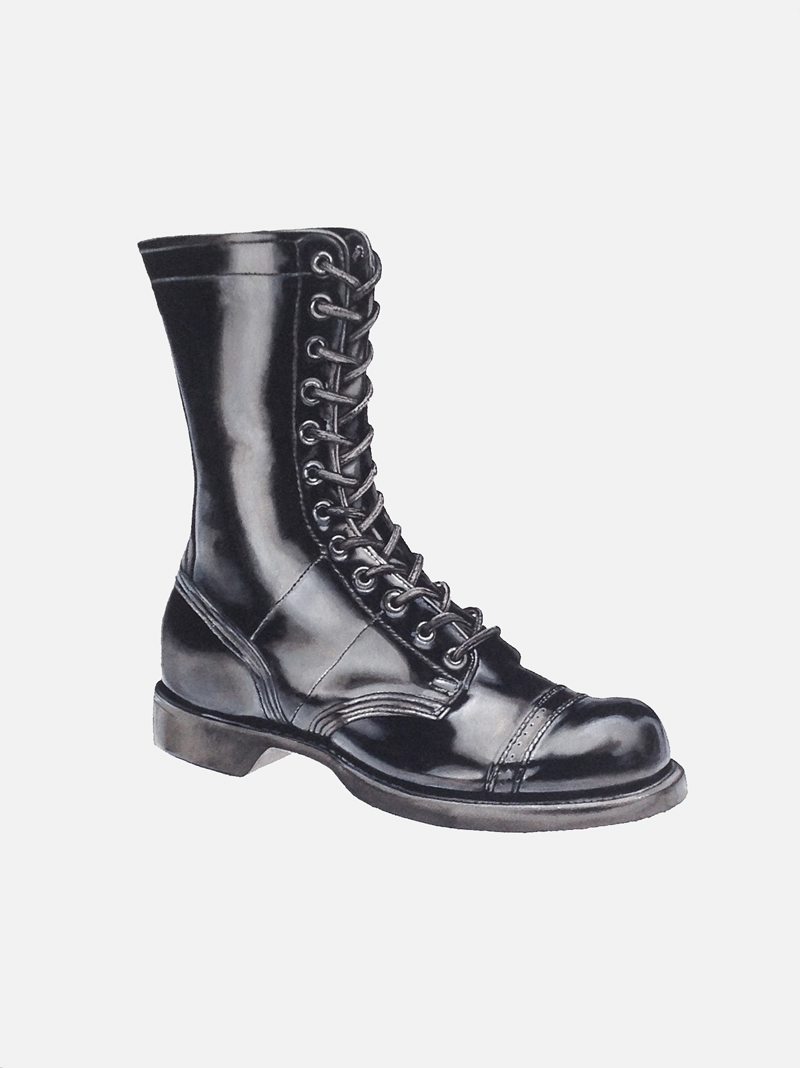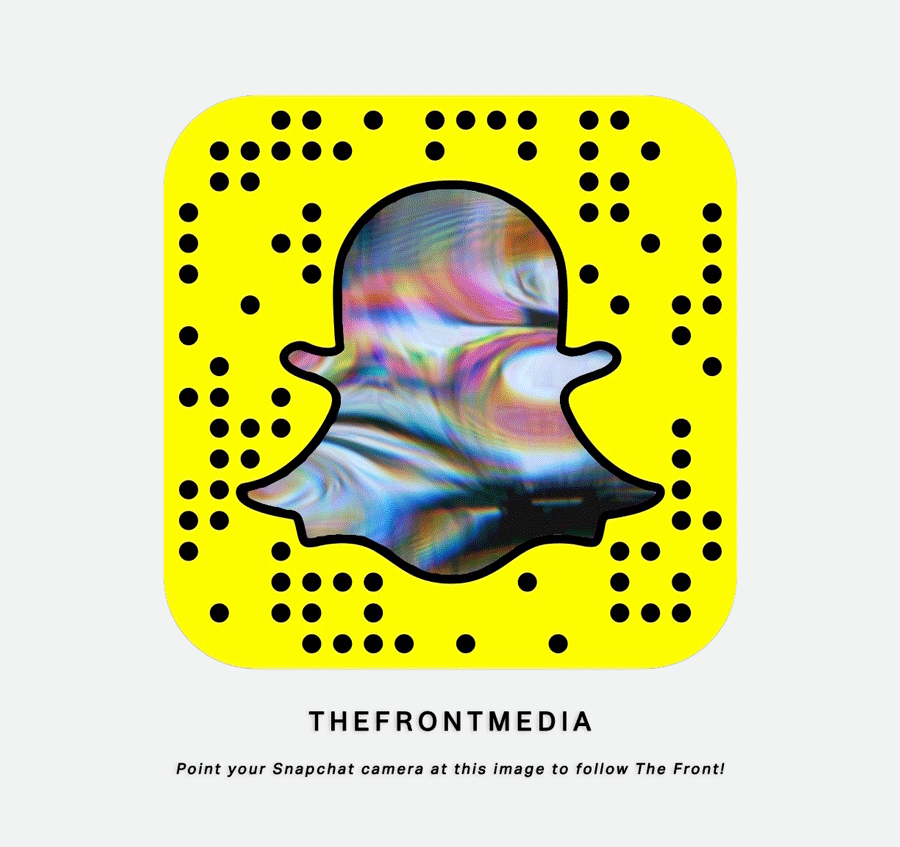Venus in Leather
Inspired by Punk, BDSM and her own Chicanx heritage, Brooklyn-based tattoo artist and illustrator Tamara Santibañez uses an anarchist ethos to subvert all your dominant ideas of what art can be.
An interview with Brooklyn-based tattoo artist and illustrator Tamara Santibañez
By Staff
Mexican-American printmaker, painter and tattoo artist Tamara Santibañez might be the tartest Georgia peach to even come out of the southern, coastal state. After falling in with the punk and anarchist scenes as a pre-teen, she developed an early style based on counterculture imagery and cult Chicano zines like Teen Angels, Cholo Style and Mi Vida Loca. While attending New York’s Pratt Institute for printmaking, she discovered the high of tattooing, and took up residence at Brooklyn’s legendary Saved Tattoo. Named one of the top 6 tattoo artists in NYC by Complex, her influences range from S&M to indigenous Central American folklore, her work a form of “abstract self-portraiture” that balances intersectionality and eroticism with a wry sense of humor.
Recently, at the 2017 Spring Break Art Show, she created–using only pen, paper and her own dexterous hands–a life-sized 3D model of a teen’s bedroom, with faux band posters and other ephemera evoking a misspent punk youth of bad dye jobs, crowded house shows, and afternoons crafting homemade zines. Intrigued, we reached out to Santibañez to learn more about her creative process and artistic influences, from sex to ceremonies to the simple act of self-reflection.
How close to your own teen bedroom was this installation?
I wanted the staged room to be drawn from my own experience, but only to a point. Everything was referenced from something I remembered owning, or a band I was listening to. At the same time, I wanted to keep it general enough that viewers could situate their own youth within it. Band posters and records as artifacts hold a massive amount of memory power, and I wanted viewers to conjure up their own experiences while still retaining a curiosity as to who the room might belong to.
How has your Chicanx heritage influenced your work?
It’s something I am constantly re-experiencing, since it feels so different in different settings. I once read that Mexican-Americans “exist in the hyphen, rather than in either of the two descriptors.” Which felt accurate. Growing up in the South was interesting because I felt divorced from a vibrant Latinx community. My mother made sure we spoke Spanish and traveled to Mexico frequently to see family, which I am grateful for. But my art was a way to work through questions I had about my own identity and create connections where I was unable to find them. This show in particular grew from encountering punk as a teenager and feeling that “choosing to be punk” was choosing not to be Mexican. The punk scene at the time was not a multicultural space.
You’re a tattoo world vet at this point. How are pen and paper different from skin and needle?
As a medium they’re completely different. The first time I tried to create a tattoo it immediately became apparent it was unlike any other I had ever used. The thing I like is that it’s collaborative. I find that to be very important to my creative practice. It’s grounding and humbling to have another human as part of the process, with their satisfaction as the ultimate end goal.
You went to Pratt for printmaking but never formally apprenticed in tattoo. If you could go back in time would you flip those two? Trade art education for professional tattooing experience?
That’s a hard question. I do have strong opinions on art school as an institution, especially that specific type of formalized art education. For what I studied, which is printmaking as a craft, it’s traditionally learned through apprenticeship. I worked as a studio assistant for a printmaker when I was in school, which, in retrospect, was much more informative. Classes obviously give you basic techniques, but to actually learn you have to practice constantly. So, that was a greater contributing factor. Thinking about the time I spent in class versus time spent actually drawing or painting or printing, I don’t think it served me well. I do often wish I’d had more of a formal apprenticeship in tattooing, just because there are certain fundamentals that are drilled in that make you quicker. At the same time, it’s more common than people think to be self-taught.
What would you call your technique?
I do a lot of fine-line tattooing that’s heavily influenced by Chicano black and gray techniques. It’s more of a West Coast aesthetic. I also create tattoos that are more influenced by punk, goth, heavy metal, leather aesthetics. That’s more my “New York tattoo style.” People like it more aggressive here.
What does your Mexican Jewish mom think of your tattoos?
My mom is shockingly supportive. When I first started getting tattooed she was hesitant because I was this young punk art student without a life path. She would say, “But a job? How will you get a job?” Now that she sees what I do for a living, she understands. She doesn’t even notice when I have a new one!
Your work often gets associated with the BDSM subculture. Do you feel that a BDSM practice, whether professional or personal, can be a platform for a greater political identity?
I’m glad that you asked that because it’s something I think about and revisit constantly, especially since trends like Fifty Shades of Grey have brought BDSM and kink lifestyles into popular mainstream media. There’s even apps that are like Tinder for Kink. But I find people who are “into it” may not define it explicitly as political, but there’s an understanding of and perceptiveness about power exchange that should be inherent to the practice . To me, it’s all about having a more profound self-awareness of power dynamics and structures, whether they’re larger, overarching power structures that we live under or more intimate, between two human beings. Kink can be a powerful tool for unlearning, unseating, or subverting those dynamics.
It’s interesting that it’s become such a cultural trend.
I do a lot of reading on leather communities and leather sexuality. From what I can see there’s three distinct waves. There’s the initial wave, post-Wild Ones, Marlon Brando, gay male sexuality, leatherdykes carving out space for themselves. Then, post-AIDS scare, in the ’90s, which rose simultaneously with the popularity of industrial and the ‘modern primitives’ subculture. I think we’re in a new wave currently.
Based on your installations, it feels like you’re a collector.
I collect a lot of vintage magazines like Teen Angels and LowRider, and fetish magazines and catalogs like Venus Infers. I love that stuff–women writing about S&M. There’s a great book called Coming to Power by leather organization SAMOIS that was one of the first I bought. It’s interesting because S&M wasn’t a scene that was initially friendly towards women. It was so defined by masculinity. Then later, by a specifically gay male sexuality. Because of the climate of second-wave feminism at that time if a woman identified as a feminist and were out about being into S&M they were met with backlash and ostracized. People told them that they were just masochists internalizing a desire for their own oppression. So, I particularly like to collect and read magazines and writings by and for women of that era who were doing the work of advocating for their desires and politics simultaneously.
Creating both tattoos and art, what do you find stimulating and/or aggravating about each?
It’s been interesting trying to navigate the two and seeing where they’re disparate and where they overlap. I think tattooing is still relatively isolated from the art world, even though there’s many who manage to transcend both. Tattooing, historically, was seen as a folk art. Subcultural. There’s a lot of times I’ll think the imagery I’m using is redundant, since I’m already so immersed in a scene with a specific aesthetic. But then I’ll go to an art fair or a museum, and won’t see anything like what I’m making. It makes me feel like I should keep going.
What are your thoughts on feminism?
More and more I realize I was in a unique position being exposed to feminism at such a young age. At 17, I stopped shaving my legs, rebelled against traditional femininity, worked at the feminist bookstore. I was entrenched in anarchist feminism. I laugh about it now because I still don’t shave my legs. [chuckle] Maybe that’s my point of credibility. I don’t really get the punk nod on the street anymore and sometimes when I go into a feminist bookstore, I get a side-eye because I’m wearing high heels and have acrylic nails. But my aesthetic choices today are a direct result of a long process of deconstructing what it “looks like” to be a woman–while also in the throes of puberty. Not wearing makeup, having a mohawk and lots of piercings, wanting to look aggressive. Now I look a little more normal. I don’t externalize my political views in the same way. But I know many women never had that experience. Notions of female competition or slut shaming–I left that aside at a young age.
Can you tell me about Discipline Press?
Discipline Press was founded at the beginning of 2016. Zines and DIY publishing were and still are a huge part of how I got into radical politics and activism, and it’s great to see them now playing a major role in art. Discipline is a way for me to publish work from people whose voices and perspective I see as important and necessary. The themes involved are drawn from my own interests and daily life, so the Discipline publications tend to be a natural extension of what I’m already looking at.
What else are you working on now?
I’m continuing a series of leather paintings from “Landscapes,” my show last fall at Slow Culture. I’m also working on a drawing collection of pyramid studs reduced to a flat, graphic shape. I’m interested in continuing to work more in installation and sculpture.




